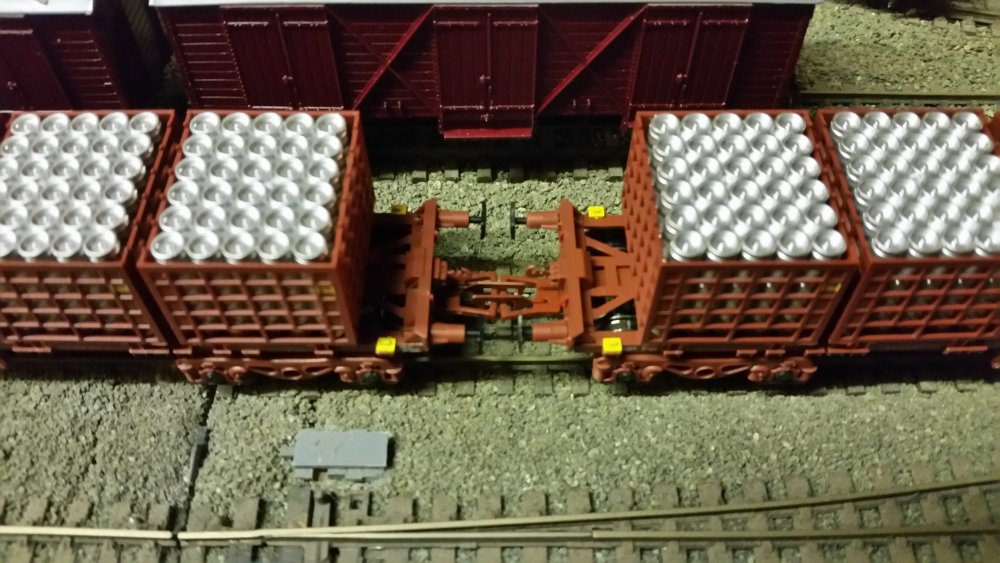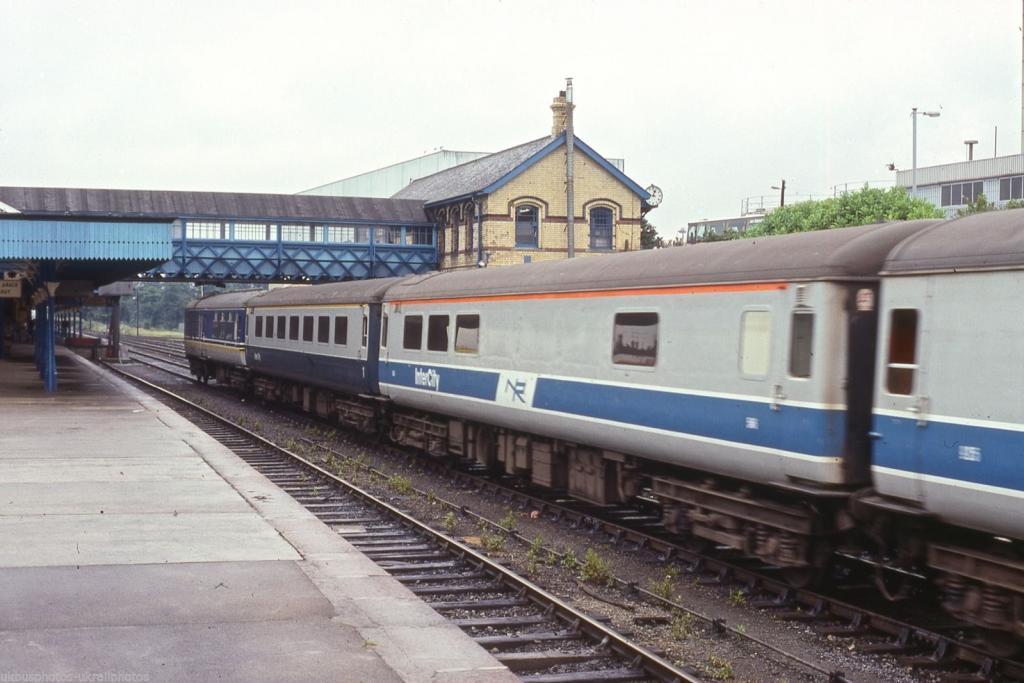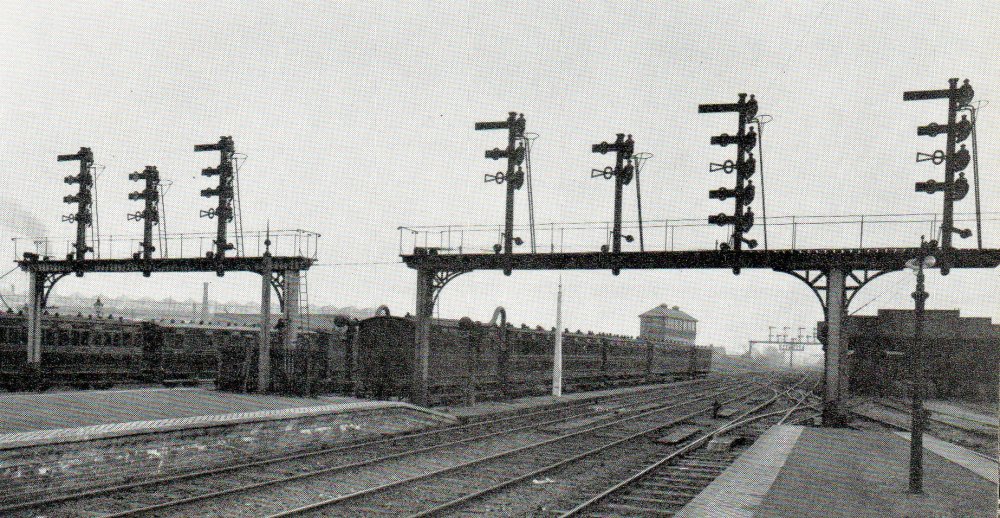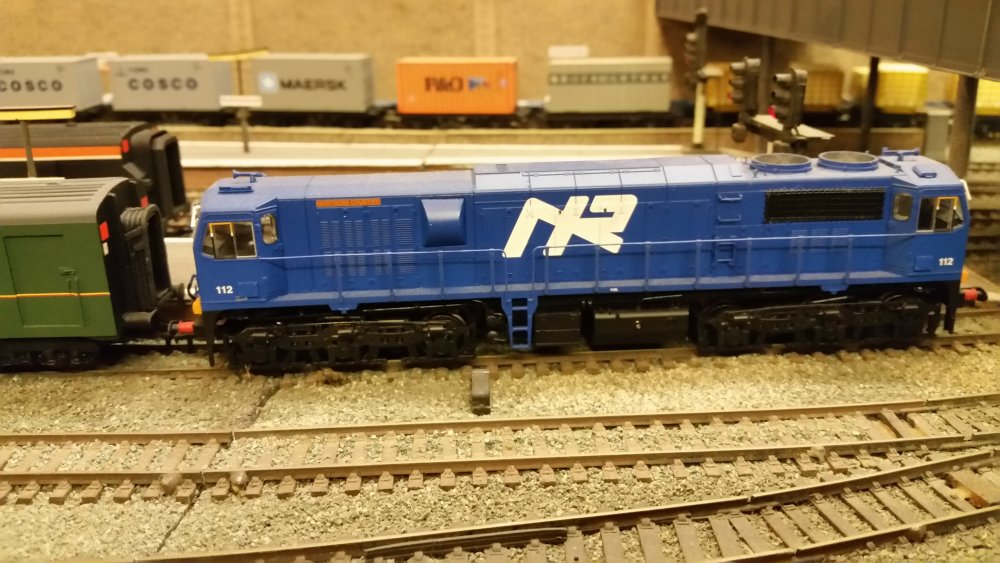-
Posts
547 -
Joined
-
Last visited
-
Days Won
1
Content Type
Profiles
Forums
Events
Gallery
Everything posted by Dhu Varren
-
If it is of any help, in the IRRS journal for Autumn 1964, in 'Coaching Stock of the NCC', these coaches are described as seating 5 1st class , 8 2nd class and 24 3rd class passengers. There was a lavatory to each compartment, but no corridor. Apart from the 1st class, I just can't figure out what the seating arrangements could have been
-
I think you will find that the 9ft 9in width refers to the width over the Guards Lookout Duckets. The coach body width remained at 8ft 6in.
-
PRONI Maps have OS maps of the period. Below is a couple of screen grabs, one for 1900-1907, the other for later.
-
It is not a problem mixing Insulfrog and Electrofrog points on a layout. From a wiring point of view, the simplest way is to treat them all as being Electrofrog.
-
You have done a superb paint job there. Unfortunately, there are one or two errors, including JHB's observation about the gray band above the windows. Another omission is the black band along the bottom of the side in line with the step recesses. My third observation is the ends of the roof, which should be roof colour down to a line on the coach end in line with the gutters. The coach you have used is the earlier Mk 2/2a, none of which were ever used by NIR. NIR used the Mk 2b/2c which were different. The Mk2b/2c had an extension of the gutters round the coach end to the gangway. This was needed due to the 'wrap round' doors fitted to the Mk 2b/2c. The Mk2/2a had traditional doors fitted, and gutters were not fitted to the ends. This can be seen on some RPSI coaching stock of Mk2/2a design, obtained direct from BR sources, where the roof colour is carried down to where the gutters would be on the Mk 2b/2c.
- 469 replies
-
- 1
-

-
- ballyercall
- layout
-
(and 1 more)
Tagged with:
-
I used BR Grey (from the old blue/grey livery) for the grey. The blue is Revell 52, which is a dead ringer for the blue of the MM NIR locos. So much so that when I renumbered 8113 to 111, I only had to respray the cabs, as the paint colour matched the rest of the body perfectly.
-
I have used the supplied close coupling bars with my fixed rake of 'Ferts' but the 'Beer Keg' wagons will be used in mixed freight trains, which include some extra 'Ferts', so I wanted them to have tension lock couplings for shunting purposes. I have also fitted the Bachmann 36-061 couplings to my baby GMs, and other MM locos, to reduce the gap between locos and wagons.
-
Once again, our friends at IRM have done us proud with another fine model. However the only criticism I have applies to all the wagons in the 42ft project, and others as well, and that is the larger than necessary gap between vehicles when coupled with the couplings supplied, and not everyone uses, or even likes, Kadee couplings. One easy answer is to replace the supplied couplings with Bachmann 36-061 Short Straight couplings, which are a direct plug in replacement, and reduce the gap by about 2.5mm. They are also black which means they are less conspicuous than the brown couplings supplied. The following pictures show two Keg wagons with the couplings compressed, and showing the difference in the gap between buffers. Original couplings as supplied. Replacement Bachmann couplings Unfortunately, at the time of writing, there seems to be a shortage of these particular couplings with no online retailers having any stock, although I did manage to obtain some from Stockton Models Ltd. which arrived in record time.
-
You got me a little confused for a moment JBH, so much so that I had to have a look at an old map. The line to larne disappears into the middle distance to the left of that very tall pole, which could be the signal shown on the map, and another one beyond. The line to Ballyclare and Doagh is the line next to the platform, and, as you say, the line to Ballymena is the other side of the building. The line at bottom centre is a siding, probably a headshunt, but it does not show on the map below. Line to larne top right. Line to Ballymena bottom left. Line to Ballyclare/Doagh bottom left of centre.
-
According to E M Patterson's book on the Ballycastle Railway, coach 353 had 4 compartments plus the Guard's compartment and lavatory. From right to left in the picture would have been a vestibule and lavatory, a 1st class non-smoking compartment seating 6 and a door each side, a 1st class smoking compartment seating 6 and a door each side, a 3rd class smoking compartment seating 15 and a door each side in one bay, a 3rd class non-smoking compartment seating 16 and a door each side in one bay, and then the Guards compartment which had double side doors. Initially I was a bit puzzled about the 15 seats in the 3rd class smoking compartment, but then I realised that the 1st class compartments had 6 seats with a corridor down the middle, offset to one side. This would then mean that the connecting door between the 3rd class smoking and the 1st class smoking compartments would have to be offset and would have reduced the space available for 2 + 2 seating across the coach, making it 2 + 1 against the partition. I have not been able to find a drawing to confirm this. This coach was the only one of the corridor coaches not to have ended up on the Donegal Railway.
-

BR blue & grey on Irish rails
Dhu Varren replied to dave182's topic in Photos & Videos of the Prototype
Nice thought. However, when repainted, 904 went straight into the 'Bumble Bee' livery. As far as I know, none of the other NIR Ex BR coaches ever ran in service in BR blue and grey. -

BR blue & grey on Irish rails
Dhu Varren replied to dave182's topic in Photos & Videos of the Prototype
Three different liveries in one train at Dundalk, including 904 in BR blue and grey. https://irishrailwaymodeller.com/uploads/monthly_2017_01/59eb804eb0b99_5465.jpg.9fae8cc20189739ed21c578db8cc969f.jpg -

Photographic Website Updates
Dhu Varren replied to thewanderer's topic in Photos & Videos of the Prototype
Up until the 1970s, the line at this point used to be straight and ran next to Seagoe Cemetery. The deviation to the left was made to enable the new road on the right to be built between the railway and the cemetery. As part of the new road scheme, Seagoe level crossing was replaced by a road bridge, which can just be glimpsed in the trees at the top left of the picture. -

Photographic Website Updates
Dhu Varren replied to thewanderer's topic in Photos & Videos of the Prototype
Likewise. -
I think that JHB and Noel are talking at cross purposes here. I believe that JHB is talking about the Wrenn 2-6-4 tank locomotive, whereas Noel is talking about the Tri-Ang 2-6-2 tank locomotive. The Wrenn 2-6-4T had a tendency for the rear bogie to lift whilst under load. If I remember correctly, I think this was due to the tension lock coupling, being a retrofit to the ex Hornby Dublo bogie, being mounted a little lower than the standard tension lock fitted to Tri-Ang Hornby stock. The original Hornby Dublo version with it's buckeye coupling did not seem to suffer with this problem. It is possible to fit a DCC Chip to a Wrenn locomotive, I fitted one to a Wrenn Duchess a while ago for a friend, but it requires a bit of surgery. The problem is that one of the motor brushes in Wrenn and Hornby Dublo locos is mounted directly in the diecast chassis, and needs to be insulated. This requires the brass brush sleeve to be removed, the hole enlarged and the brass sleeve refitted with an insulating sleeve.
-

Tue 09 Jun 20 03:35 Blue Pullman on Talking Pictures tv
Dhu Varren replied to spudfan's topic in Letting off Steam
Course you can, the first time I ever saw Talking Pictures, it was in Portrush. -
Before even looking too closely at the top right background, which is the station, the number of 'Brown Vans' in the goods yard would suggest that the photo is of Belfast York Road.
-
Here is a picture of the whole of both gantries. There are no starter signals for the centre roads, as they are not running lines and are only used for shunting moves.
-
Perhaps the family likeness stems from the fact that, certainly in the case of the BCDR and SLNCR, all their locos were supplied by Beyer, Peacock & Co.
-
The common name for that wheel arrangement is an Atlantic, and being a tank engine, the loco would be an Atlantic tank.
-
Yes, that is possible. 358 was one of the 1924 built batch, originally numbered 243.
-
Three of the Class U2 Belfast built locos were built new, with eight being rebuilds of Class A and U 4-4-0s. Seven were built in Glasgow by the North British Locomotive Co.. The easy way to tell whether a U2 is a Belfast or a Glasgow engine is to look at the cab roof. All the Belfast engines have square corners to the rear of the cab roof. The Glasgow engines have a curved cutaway on each corner.
-
No, the coach behind the loco is not a 'Larne Steeler'. The Larne Steelers were steel, flush sided coaches, the one in the picture is a wood panelled coach, probably one of the 1924 or 1935 built batches. If the 30 years quoted by JHB is correct, then this would date the picture as 1940 or before, which means that the coach could not be 238 or 241, as they did not arrive on the NCC until 1941 as replacements for stock destroyed in the Blitz of that year.
-
-
When NIR GM 112 was on loan to Irish Rail, not only were the marker lights changed to the later LED type as used on IR, but three of her cab windows were replaced with ones presumably salvaged from withdrawn IR Baby GMs. The replacement frames were not repainted in NIR blue for a long time after, and the loco ran with tippex liveried window frames for quite a while. With true Paddy Murphy accuracy, his model of 112 has the modified marker lights, and, the tippex liveried cab window frames.
.png.c363cdf5c3fb7955cd92a55eb6dbbae0.png)








